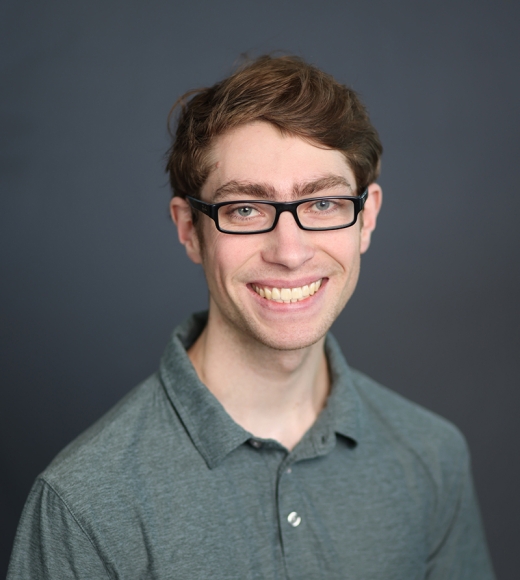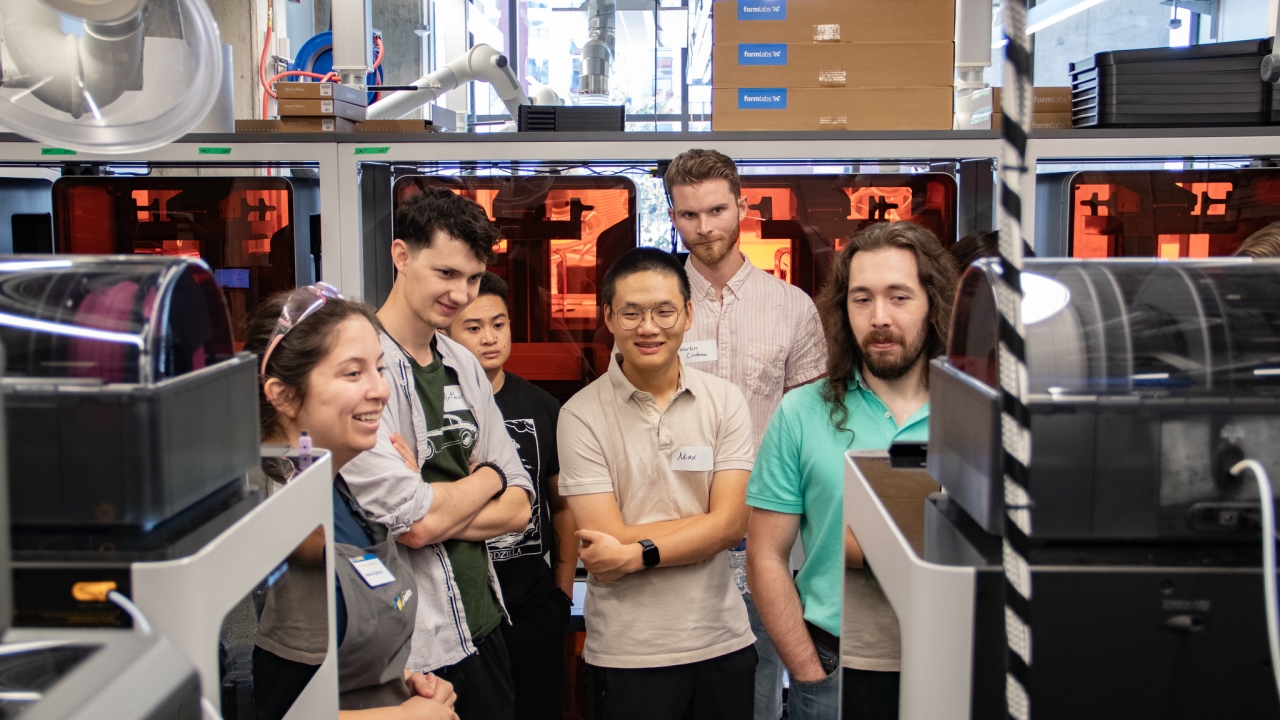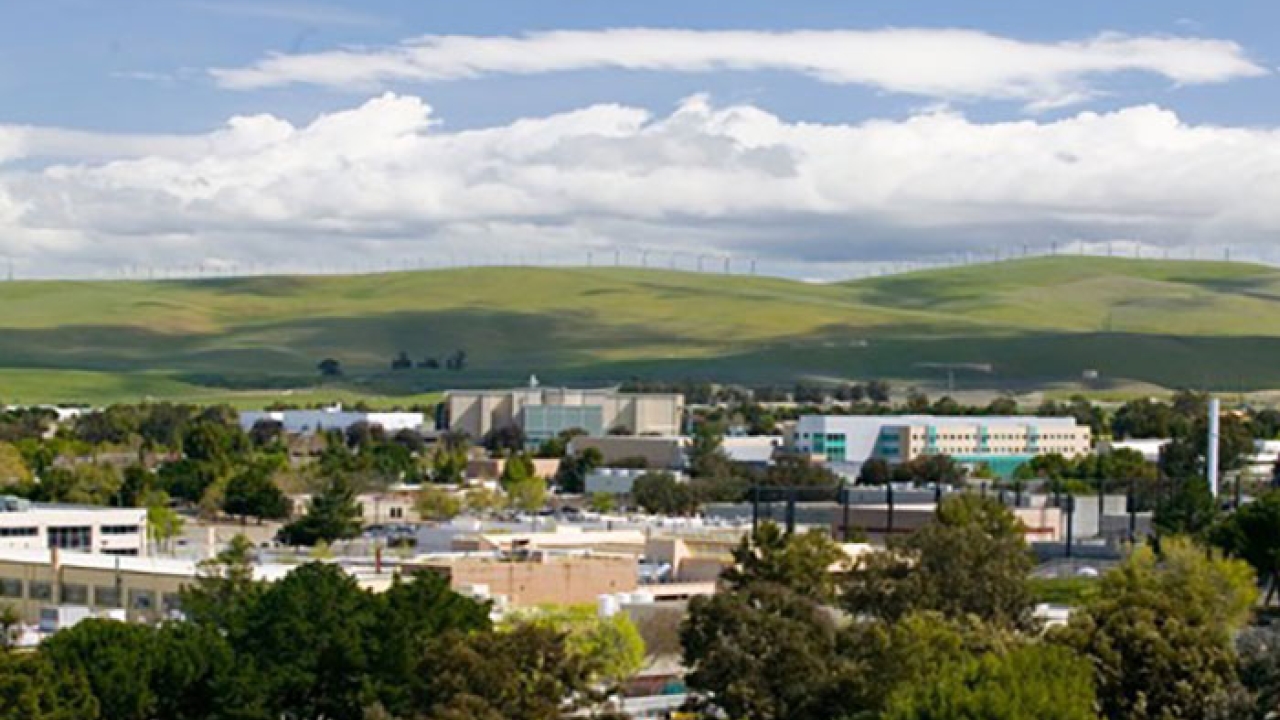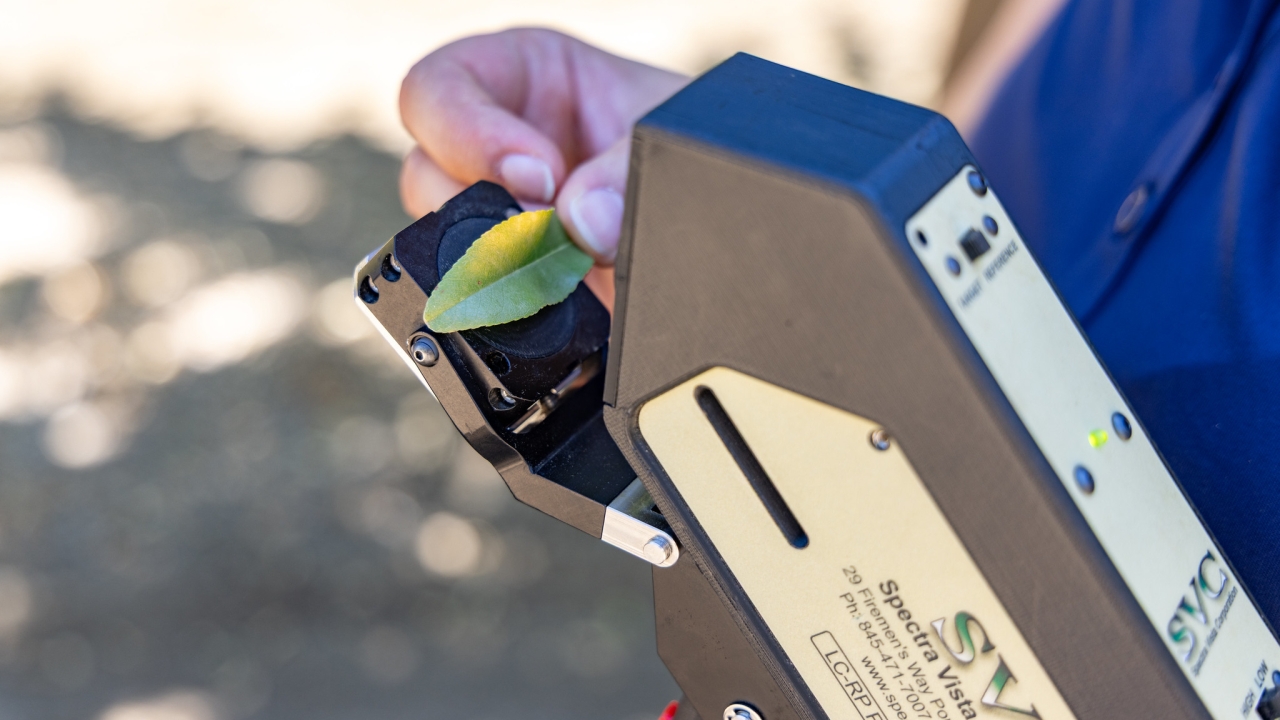A Layered Approach to New Paths in Solar Power
Graduate student Declan Kopper combs through materials to illuminate a road to more efficient photovoltaic power conversion
A vortex whirls around a brightly colored periodic table, sucking up elements like aluminum, tungsten, molybdenum and nitrogen, and swirling them around to make different variations of material systems. It raises the question, "What is the right combination?"

What may sound like a research scientist's fever dream is the cover image for an April issue of ACS Applied Energy Materials. The image is representative of the paper "Material Screening for Thermophotovoltaic Optical Emitters," which is published in the journal and first-authored by Declan Kopper, a second-year Ph.D. student in materials science and engineering at the University of California, Davis.
Kopper conducts research on thermophotovoltaics, which, like solar cells, convert light to electricity. (Typically, solar cells are made of photovoltaics, which only convert a portion of the wavelengths of light emitted by the sun to electricity.)
Thermophotovoltaics make use of a specially engineered high-temperature optical emitter that radiates light. Designing the emitter to suppress radiation that cannot be converted to electricity shapes the emission spectrum and helps boost the efficiency of the energy conversion process because only the wavelengths that will be absorbed by the photovoltaic cells will be emitted.
Determining what materials would be best to create this emitter, however, is where the vortex comes in.
"There are many different compounds out there that are applicable for this type of system," said Kopper, whose research is funded by three fellowships from graduate studies. "This research involves utilizing many aspects and properties at the heart of materials science, so it's really a whirlwind of different types of materials that we can combine and interact in certain ways to create these devices."
Simulating the Spectrum
To do this, Kopper and his mentor Marina Leite, professor of materials science and engineering, tested more than 2,000 combinations of 53 materials, chosen for their ability to withstand high temperatures. They paired them into combinations of nanometer-thin coating and substrate, then checked the combinations expected to remain stable at 1,800 degrees Celsius.

Kopper then used an electromagnetic simulation called the transfer matrix method to calculate how much light was being absorbed, transmitted and reflected at each wavelength for each combination of materials. The method predicted how each combination would emit light at high temperatures and showed how adjusting the thickness of the coating tunes the emission.
This revealed that adding the right coating layer significantly improves performance compared to using a bulk material alone, showing a scalable way to design better thermophotovoltaic systems and which can help to recover waste heat and create more pathways to renewable energy.
"It's exciting to see through this very simple design of adding one little layer on top that we're able to get improvements in these thermophotovoltaic systems," said Kopper.
Lighting the Way for the Next Generation
Researching optics and photonics was not always where Kopper saw himself. In fact, when he entered UC Davis as an undergraduate student, Kopper was a psychology major. He found out about materials science and engineering in his second quarter, sat in on a lecture and decided to double major.
"I essentially said, 'I wish there was some major that combined materials, science and maybe engineering,' and my friend replied, 'Hey, there's a major that's exactly that combination.'"
As someone who was not introduced to it until his collegiate years, Kopper understands the importance of introducing lesser-known STEM fields like materials science to young people. As part of this philosophy, he participates in outreach to students through online mentorship platforms like Letters to a Pre-Scientist and The Social Scientist.
Through these platforms, he has connected with students from different backgrounds, offering them research assistance, mentorship and even encouragement to keep trying when it gets tough. Kopper recalls one eighth-grade student he wrote letters to this past year through Letters to a Pre-Scientist, who didn't have many STEM mentors in his life.
"It was cool to hear what he was doing in science and outside of science, and to get him motivated and invested in education," he said. "Some students might not have realized that being a graduate student is even a path for them. Being able to shine a bit of light on that and telling them that this is something they could end up doing is something I'm really passionate about."
Kopper, who recently passed his qualifying exam for his Ph.D. and received an honorable mention from the National Science Foundation this year, is energized to continue his own research path in the optics and photonics field.
"It's an interesting field that has developed a lot of resurgence over the past few years," he said. "We have greater fabrication techniques now that can create a lot of complex devices, and there are a lot of unexplored materials out there that we can take advantage of."
Kopper recently received an invitation to participate in the National Science Foundation Graduate Research Fellowship Program, which supports graduate students pursuing full-time research-based master’s and doctoral degrees in STEM fields or STEM education.
The funding will allow Kopper to fabricate and characterize the top-performing emitters from his earlier project and determine their optical properties as they heat the samples to high temperatures.
He will make use of the fabrication capabilities and high-temperature optical measurement systems available in the College of Engineering’s Center for Nano- and Micromanufacturing cleanroom, as well as his lab’s custom-built optical system to conduct measurements at even higher operating temperatures than in previous experiments.
“It's incredibly exciting to receive such a prestigious fellowship,” said Kopper. “I feel so fortunate, especially given the current state of science funding. Scientific research is essential to shaping and benefiting our world and society, and I hope, through this funding, I can be a part of that effort.”





